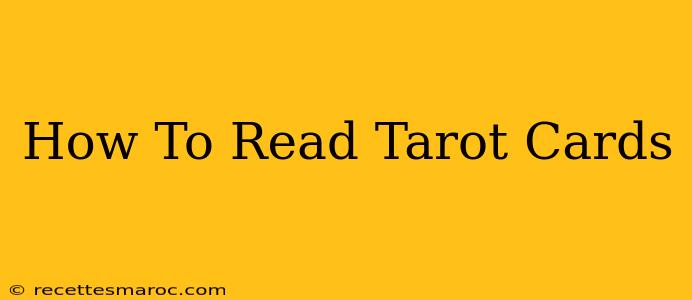So, you're curious about tarot? Want to learn how to read tarot cards and unlock their ancient wisdom? You've come to the right place! This comprehensive guide will take you through the basics of tarot card reading, from choosing your deck to interpreting the spreads. Whether you're a complete beginner or have some prior experience, this guide will help you hone your skills and deepen your understanding of this fascinating divination tool.
Understanding the Tarot Deck
The standard Tarot deck consists of 78 cards, divided into two main sections:
-
Major Arcana (22 cards): These cards represent significant life events, archetypes, and major life lessons. They often depict powerful symbolic figures and carry weighty interpretations. Think of them as the overarching themes of your reading.
-
Minor Arcana (56 cards): These cards represent the everyday aspects of life. They are divided into four suits, similar to playing cards: Wands (fire, action), Cups (water, emotions), Swords (air, intellect), and Pentacles (earth, material world). Each suit contains numbered cards (Ace through Ten) and four Court Cards (Page, Knight, Queen, King), each with unique characteristics.
Choosing Your First Tarot Deck
Selecting your first tarot deck can feel overwhelming. Don't worry! There's no "right" deck. The best deck is the one that resonates with you. Browse online or visit a local metaphysical shop. Consider these factors:
- Artwork: Do you prefer detailed, realistic art or a simpler, more abstract style?
- Intuitive Feeling: Which deck calls to you? Pick the one that makes you feel excited and drawn to it.
- Deck Size and Material: Consider the size and material of the cards – larger cards may be easier to handle, while smaller cards are more portable.
Basic Tarot Card Reading Techniques
Once you've chosen your deck, it's time to learn some basic reading techniques. Here's a breakdown:
1. Cleansing Your Deck
Before your first reading, it's a good idea to cleanse your new deck. This helps to remove any residual energies from its previous owners or manufacturing process. Common methods include:
- Smudging: Using sage or another cleansing herb to purify the cards.
- Moonlight Charging: Leaving the cards under the moonlight overnight.
- Visualization: Visualizing white light cleansing the deck.
2. Shuffling and Cutting the Cards
Shuffle the deck thoroughly, allowing your intuition to guide you. Then, cut the deck into three piles. This helps to randomize the cards and ensure an unbiased reading.
3. Choosing a Spread
A spread is the arrangement of cards you lay out for a reading. There are many spreads, from simple one-card draws to complex multi-card layouts. Start with a simple three-card spread focusing on Past, Present, and Future, or try a single-card draw for a quick insight.
4. Interpreting the Cards
This is where the fun (and the learning) begins! Each card has its own meaning, but understanding the nuances takes time and practice. Begin by researching the meaning of each card in your chosen deck – most decks come with a guidebook.
- Consider the context: The meaning of a card can shift slightly depending on its position in a spread and the surrounding cards.
- Trust your intuition: Don't be afraid to let your intuition guide your interpretation. Your gut feeling is often just as important as the card's literal meaning.
- Focus on the message: The most important aspect of a reading is the message the cards are trying to convey. Don't get bogged down in the specifics.
Advanced Tarot Techniques
As you gain experience, you can explore more advanced techniques such as:
- Different Spreads: Experiment with various spreads to explore different aspects of a situation.
- Card Combinations: Learn how cards interact with each other to create a richer, more nuanced reading.
- Intuitive Reading: Develop your ability to connect with the cards on a deeper, more intuitive level.
Practice Makes Perfect
Learning to read tarot cards is a journey, not a race. The more you practice, the better you'll become at interpreting the cards and connecting with their energy. Don't be discouraged if you don't understand everything immediately – it takes time and dedication to master this skill. So, grab your deck, shuffle the cards, and begin your exploration into the fascinating world of tarot!

